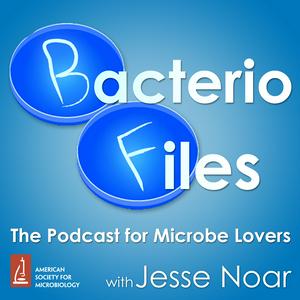489: Soil Smell Synthesis Significance
This episode: Many organisms produce the smell of earth, geosmin, and many others can sense it–but why? Download Episode (6.0 MB, 8.7 minutes) Show notes: Microbe of the episode: Acidianus spindle-shaped virus 1 News item Takeaways The smell of soil or earth is one of the most recognizable smells, and comes largely from a chemical called geosmin, produced by many different kinds of bacteria. Many animal species are sensitive to geosmin, some attracted by it and others repelled. But it is still not entirely understood what is the evolutionary benefit to the microbes that produce it, or the reason why different animals are sensitive to it in different ways. In this study, different geosmin-producing bacteria were paired with tiny bacteria-eating roundworms, nematodes, to see how the chemical affected their interactions. Production of geosmin affected the worms' movement, apparently inducing them to avoid colonies of the producing microbes in some cases, though the worms still sometimes fed on the bacteria. Adding geosmin to colonies of different bacteria did not affect the worms' behavior though, so other factors seem to be involved. Journal Paper: Zaroubi L, Ozugergin I, Mastronardi K, Imfeld A, Law C, Gélinas Y, Piekny A, Findlay BL. 2022. The Ubiquitous Soil Terpene Geosmin Acts as a Warning Chemical. Appl Environ Microbiol 88:e00093-22. Email questions or comments to bacteriofiles at gmail dot com. Thanks for listening! Subscribe: Apple Podcasts, Google Podcasts, Android, or RSS. Support the show at Patreon, or check out the show at Twitter or Facebook.
